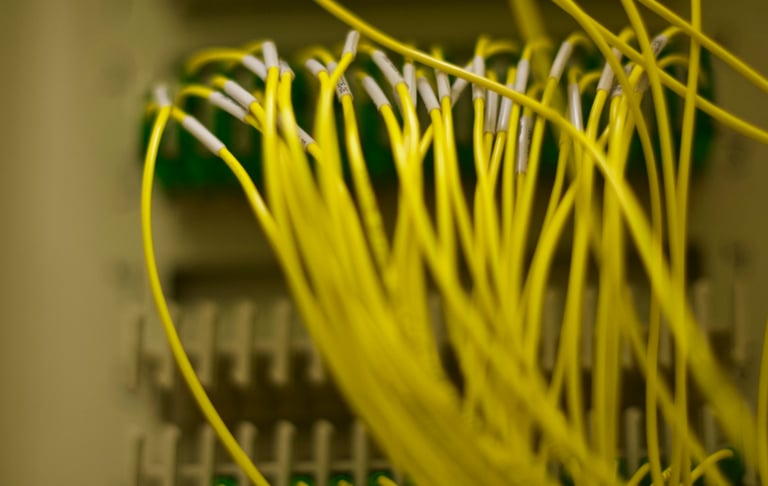Modern Computer Networking and Data Transmissions: The Evolution and Future


By Sikandar Raza
In today's interconnected world, modern computer networking and data transmission are the backbone of virtually every communication system, from personal devices to complex global infrastructures. These technologies not only facilitate real-time communication but also underpin innovations such as the Internet of Things (IoT), cloud computing, artificial intelligence (AI), and the growing demand for high-speed data transfers.
The Evolution of Computer Networking: Early Beginnings: From ARPANET to the Internet
Computer networking has come a long way since its humble beginnings in the 1960s. The ARPANET, funded by the U.S. Department of Defence, was one of the first packet-switching networks. It used the principle of breaking data into small packets and sending them across different routes to reach their destination, ensuring more efficient and resilient communication.
By the late 1980s and early 1990s, the world witnessed the rise of the Internet. The introduction of the TCP/IP (Transmission Control Protocol/Internet Protocol) stack, which standardised data transmission across diverse networks, allowed millions of computers to connect globally. This shift gave birth to the World Wide Web, e-commerce, social media, and countless other technologies that rely on computer networking.
From LANs to WANs and Beyond
Local Area Networks (LANs) and Wide Area Networks (WANs) became essential components of businesses, enabling faster communication within and between organisations. Technologies like Ethernet and Wi-Fi revolutionised how devices interacted on a network, while the advent of fiber-optic cables and 4G networks allowed data to travel further and faster.
Current Trends in Modern Networking: 5G Networks and Beyond
One of the most significant advancements in recent years has been the roll-out of 5G networks. Offering ultra-low latency, extremely high download and upload speeds, and the ability to support a massive number of connected devices, 5G has transformed not only mobile connectivity but also has vast implications for industrial and IoT applications.
With the ongoing development of 6G, the next generation of mobile networking promises even faster speeds, improved AI integration, and seamless connectivity across different platforms and devices. These advancements will make real-time communication and data transfer near-instantaneous, opening up possibilities for remote surgeries, autonomous vehicles, and immersive augmented reality (AR) and virtual reality (VR) experiences.
2. Software-Defined Networking (SDN)
Software-Defined Networking (SDN) represents a paradigm shift in how networks are designed, managed, and optimised. Unlike traditional networking, where the control plane (which makes decisions about how data moves) and the data plane (which moves the data) are tightly coupled in hardware, SDN separates these functions. This decoupling allows for greater flexibility, scalability, and automation in network management.
By abstracting the control layer and centralising network intelligence, SDN enables network administrators to quickly adjust and optimize the network, improving resource utilisation and performance. It also paves the way for innovations like network slicing, where virtual networks can be created for specific needs, such as for healthcare, manufacturing, or smart cities.
3. Network Function Virtualisation (NFV)
Complementary to SDN, Network Function Virtualisation (NFV) involves moving traditional network functions—like firewalls, routers, and load balancers on to software-based platforms. This virtualisation reduces reliance on expensive, proprietary hardware and increases the agility and scalability of networks. NFV plays a critical role in cloud services and telecommunications, where scale able and cost-effective infrastructure is vital.
4. Cloud Networking
As businesses and individuals increasingly rely on cloud computing, cloud networking has emerged as an essential component of modern data transmission. Rather than relying solely on traditional on-premise infrastructure, organisations can use cloud-based services to store, process, and manage data in real time.
Services like Amazon Web Services (AWS), Microsoft Azure, and Google Cloud have enabled organisations to rapidly deploy, scale, and manage applications without the need for extensive on-site hardware. With cloud networking, companies can access computing resources on-demand, optimise their infrastructure costs, and improve performance with built-in redundancy and fault tolerance.
The Role of Data Transmission in Modern Networking
Data transmission has evolved alongside advancements in computer networking. The way we transmit data today has far-reaching implications for businesses, governments, and individuals.
1. High-Speed Data Transmission: Fiber Optics
Fiber-optic technology has significantly outpaced traditional copper wire, offering exponentially faster data transmission speeds and much greater bandwidth. Fiber-optic cables are capable of transmitting data over long distances with minimal loss, making them ideal for backbone networks that span continents.
The expansion of fiber networks has played a key role in meeting the increasing demand for data, driven by cloud computing, video streaming, online gaming, and other data-intensive applications.
2. Wireless Data Transmission: Wi-Fi and Beyond
Wi-Fi technology has become ubiquitous in homes, offices, and public spaces, enabling wireless data transmission over short distances. The advent of Wi-Fi 6 and upcoming Wi-Fi 7 technologies promise to provide even faster speeds, lower latency, and more efficient use of the spectrum.
Similarly, technologies like Bluetooth, Zigbee, and LoRa are commonly used for short-range, low-power data transmissions in IoT devices. These technologies facilitate communication between billions of devices that make up the growing IoT ecosystem, from smart thermostats to wearable health devices.
3. Satellite and Long-Range Data Transmission
Satellite internet has seen a resurgence in recent years, particularly with the efforts of companies like Space X's Starlink, which is creating low-Earth orbit satellite constellations to provide high-speed internet to undeserved areas. This new form of satellite-based data transmission eliminates many of the traditional latency and bandwidth limitations, opening up the potential for more universal internet access.
Additionally, technologies such as Li-Fi, which uses visible light to transmit data, may play a role in revolutionising wireless data transmission in the future. Li-Fi promises to deliver faster speeds and improved security by utilising light waves instead of radio frequencies.
The Security Challenge
As data transmission grows exponentially, so do the risks associated with cyber threats. Modern networks face unprecedented security challenges, ranging from DDoS (Distributed Denial of Service) attacks to advanced persistent threats (APT). Encryption protocols such as SSL/TLS and the widespread use of Virtual Private Networks (VPNs) are key to ensuring data security during transmission.
However, the rise of quantum computing could fundamentally change the landscape of network security. While quantum computers have the potential to break traditional encryption methods, they also offer solutions in the form of quantum key distribution (QKD), a method of transmitting cryptographic keys securely using the principles of quantum mechanics.
Future Trends: The Road Ahead
The future of computer networking and data transmission is likely to be shaped by several key trends:
1. Edge Computing: As data needs to be processed in real time, edge computing, where data is processed closer to the source of generation (e.g., IoT devices), will reduce latency and improve performance.
2. Artificial Intelligence and Automation: AI will play a crucial role in optimising network traffic, detecting anomalies, automating tasks, and predicting and mitigating failures in real time.
3. Quantum Networking: The promise of quantum networking could redefine how we think about security, transmission speed, and capacity. It could lead to ultra-secure communications and the ability to transmit massive amounts of data instantly across vast distances.
4. Decentralized Networking: With the rise of blockchain technology, decentralized networks could emerge, allowing users to participate in creating and managing network infrastructure, thereby reducing reliance on centralized entities like ISPs.

Register now to learn more about amazing stuff like quantum computing and robotics images.
